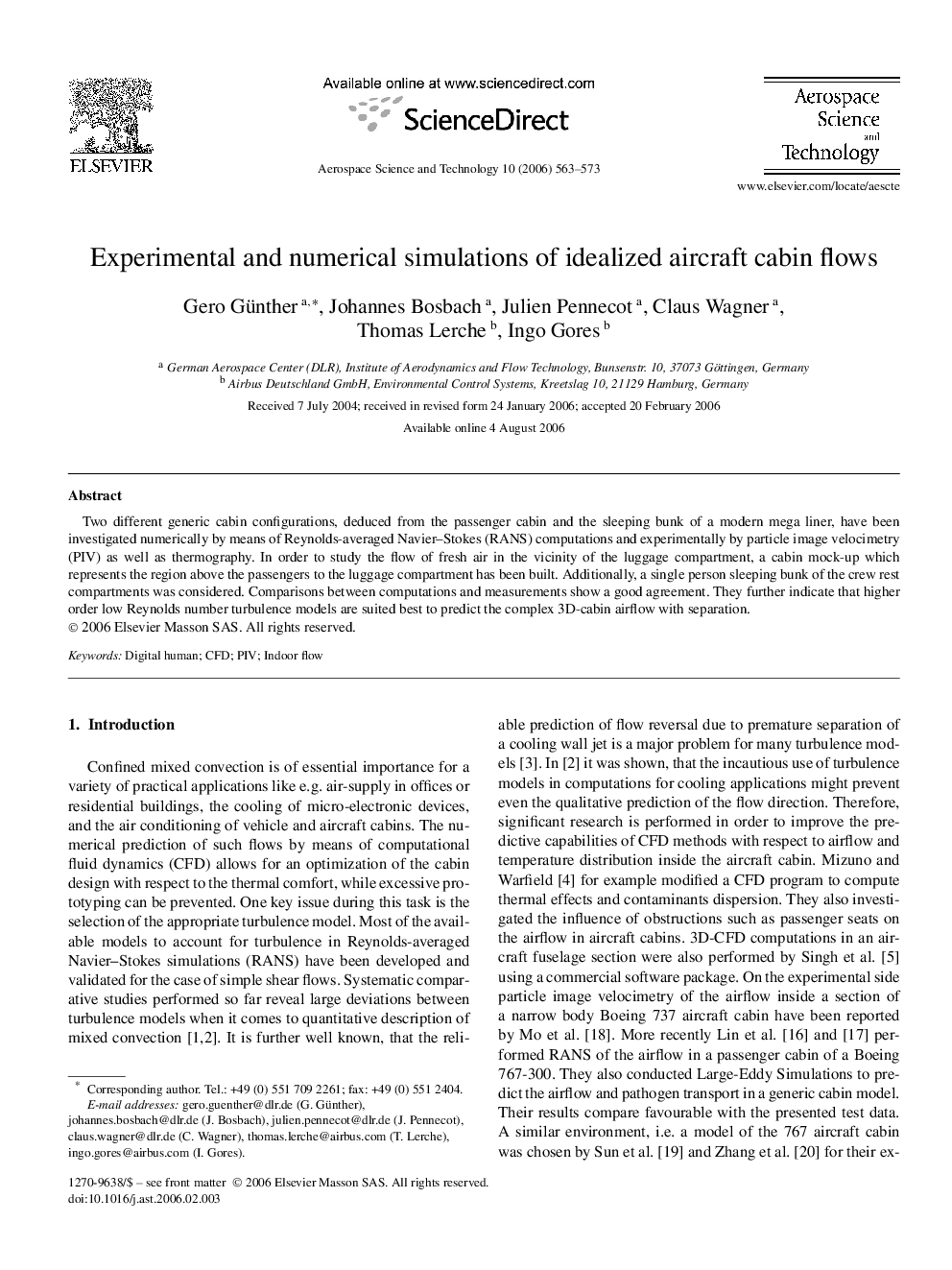| Article ID | Journal | Published Year | Pages | File Type |
|---|---|---|---|---|
| 1718984 | Aerospace Science and Technology | 2006 | 11 Pages |
Two different generic cabin configurations, deduced from the passenger cabin and the sleeping bunk of a modern mega liner, have been investigated numerically by means of Reynolds-averaged Navier–Stokes (RANS) computations and experimentally by particle image velocimetry (PIV) as well as thermography. In order to study the flow of fresh air in the vicinity of the luggage compartment, a cabin mock-up which represents the region above the passengers to the luggage compartment has been built. Additionally, a single person sleeping bunk of the crew rest compartments was considered. Comparisons between computations and measurements show a good agreement. They further indicate that higher order low Reynolds number turbulence models are suited best to predict the complex 3D-cabin airflow with separation.
